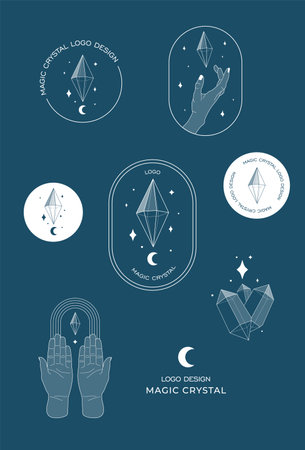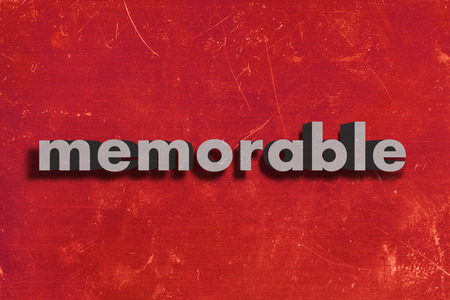1. Introduction: Tarot and Its Place in American Pop Culture
Tarot cards have become a familiar sight in American pop culture, moving far beyond their original mystical roots. Today, you might see tarot decks in movies, TV shows, bookstores, and even on Instagram feeds. The images of the Fool, the Lovers, or Death card are instantly recognizable to many Americans—even if they’ve never had a tarot reading themselves.
This growing presence is no accident. Tarot has woven itself into the fabric of daily life and entertainment, often used as a storytelling device, a symbol of mystery, or a way to explore character development. In sitcoms and dramas alike, characters turn to tarot for advice, fun, or drama. Even outside of fiction, tarot readings pop up at festivals, parties, and wellness events across the country.
How Tarot Appears in American Media
| Medium | Examples of Tarot Usage |
|---|---|
| Movies & TV Shows | Used in plot twists (e.g., fortune-telling scenes), character backstories, or to add a mystical vibe |
| Music Videos & Art | Visual motifs for album covers, music videos, and poster designs |
| Social Media & Influencers | Tarot readings on YouTube, Instagram stories about daily cards, meme culture referencing tarot imagery |
| Retail & Everyday Life | Tarot-themed products: apparel, candles, journals, and home decor found in stores like Urban Outfitters or Target |
The Rise of Tarot Stereotypes
Because tarot is everywhere—from Netflix series to TikTok trends—it has picked up certain stereotypes along the way. Sometimes it’s shown as a spooky fortune-telling tool; other times it’s portrayed as just another quirky hobby. These representations shape how Americans think about tarot—sometimes accurately, but often with a lot of myths mixed in.
Why It Matters
Understanding tarot’s journey into American pop culture helps us see why so many stereotypes have taken hold. As tarot becomes more mainstream and accessible, its meaning continues to shift—and so do the ways people relate to it every day. Exploring these trends sets the stage for looking deeper at what tarot really is (and isn’t) within American society.
2. Common Stereotypes of Tarot in American Media
A Look at How Tarot Is Portrayed
Tarot cards and readers have become symbols in American pop culture, but not always in the most accurate ways. Popular movies, TV shows, and even advertisements often use tarot as a shortcut for mystery, danger, or quick answers to lifes questions. These repeated images have created some strong stereotypes about what tarot is and who tarot readers are.
Prevailing Images and Misconceptions
| Stereotype | Description | Example in Media |
|---|---|---|
| Mystical Fortune-Telling | Tarot is often shown as a tool for predicting the future in a magical or spooky way, with dramatic music and dark lighting. | In many Hollywood films, a fortune teller dramatically reveals someone’s fate using tarot cards. |
| Scam Artistry | Some media show tarot readers as con artists who trick people out of their money by making up stories or giving fake advice. | Crime dramas sometimes feature fraudulent psychics running scams from neon-lit shops. |
| The Mysterious Outsider Trope | Tarot readers are often depicted as eccentric, strange, or living on the fringes of society—someone different from the mainstream. | TV shows may portray tarot readers as wearing odd clothing and speaking in riddles. |
How These Stereotypes Shape Perceptions
These common images make it easy for people to misunderstand what tarot is really about. Instead of seeing tarot as a personal tool for reflection or self-discovery, many Americans associate it with fortune-telling parlors, trickery, or something that only outsiders do. This has led to both fascination and suspicion around tarot in everyday life.
The Impact on Real Tarot Readers
Because of these stereotypes, real-life tarot practitioners in the U.S. often find themselves having to explain what they actually do. Many work hard to show that tarot can be used for guidance and insight—not just for predicting the future or putting on a show. Understanding these stereotypes is the first step toward seeing tarot more clearly in American culture.

3. Roots of Tarot Misconceptions
A Historical Perspective on Tarot in America
Tarot cards have a long and complex history, but their journey into American culture has been shaped by misunderstanding and myth. Originally created in Europe as playing cards during the 15th century, tarot only gained its mystical reputation much later. When tarot crossed the Atlantic, it entered a society that was already shaped by unique religious and social influences.
Religious Influences and Fear
Many misconceptions about tarot in the U.S. come from deeply rooted religious beliefs. In particular, Christian communities often associated tarot with occult practices or even evil forces. This connection was amplified by Hollywood movies and TV shows that depicted tarot readers as mysterious fortune tellers or villains. The table below highlights some key points:
Influence |
Effect on Tarot Perception |
|---|---|
Christian Teachings |
Often link tarot with forbidden spiritual practices; lead to fear or distrust |
Hollywood Portrayals |
Show tarot as dark, magical, or manipulative; reinforce stereotypes |
News Media Coverage |
Sensationalizes rare negative incidents; rarely explores positive uses of tarot |
Social Factors Shaping Stereotypes
Social attitudes also play a big role in how tarot is viewed in American pop culture. During periods like the “Satanic Panic” of the 1980s, anything considered occult—including tarot—was seen as dangerous. This led to many parents, teachers, and community leaders warning against tarot without understanding its real use for self-reflection or personal growth.
The Impact of Pop Culture
TV shows and movies continue to shape how Americans see tarot today. Characters who use tarot are often shown as outsiders, mystics, or scam artists. Because pop culture reaches millions, these portrayals have a big influence on what people believe—even if they’ve never seen an actual tarot deck before.
Summary Table: Roots of Tarot Misconceptions in the U.S.
Factor |
Description |
Cultural Impact |
|---|---|---|
| Historical Myths | Misinformation about origins; confusion between games and divination tools | Creates mystery but also distrust toward tarot practice |
| Religious Beliefs | Associates tarot with occult or evil practices due to misinterpretation of spiritual texts | Leads to fear and avoidance among certain groups |
| Media & Entertainment | Stereotypical depictions in news and film; dramatic storylines focused on danger or manipulation | Keeps negative perceptions alive across generations |
| Social Movements & Panics | Episodic public fears (like the Satanic Panic) escalate suspicion around anything labeled as “occult” including tarot cards | Makes open discussion about tarot more difficult in mainstream circles |
4. Contemporary Reframing: Diverse Voices and New Narratives
In recent years, tarot has been making a comeback in American pop culture, but this time with a fresh perspective. Instead of the old stereotypes—think fortune-tellers in smoky rooms or mysterious warnings about doom—modern media, practitioners, and influencers are flipping the script. They’re turning tarot into a tool for wellness, self-discovery, and community storytelling.
How Media Shapes Tarot’s New Image
Popular TV shows, podcasts, and even Instagram feeds now feature tarot as part of everyday life. Characters use tarot cards to reflect on choices, cope with stress, or support friends through tough times. This shift helps normalize tarot as something anyone can use for personal growth—not just psychics or mystics.
Influencers and Diverse Practitioners
A new generation of tarot readers from all walks of life is sharing their experiences online. They come from different cultures, genders, and backgrounds, each bringing their unique voice to the conversation. This diversity challenges the idea that tarot belongs to a single group or tradition. Here’s how some modern voices are reframing tarot:
| Who | How Theyre Changing Tarot |
|---|---|
| BIPOC Readers | Highlighting ancestral wisdom and cultural stories beyond the traditional European lens. |
| LGBTQ+ Influencers | Using tarot as a tool for identity exploration and community affirmation. |
| Mental Health Advocates | Integrating tarot into wellness routines for mindfulness and emotional check-ins. |
| Mainstream Celebrities | Demystifying tarot by openly sharing their own readings and experiences on social media. |
Tarot for Wellness and Self-Discovery
Rather than focusing on predicting the future, many Americans now use tarot to spark conversations about mental health, self-care, and personal values. Some therapists even incorporate card readings into counseling sessions as a creative way to prompt reflection. Social media hashtags like #TarotForSelfCare or #TarotCommunity show just how widespread these new narratives have become.
Inclusive Storytelling in Tarot Decks
The look of tarot decks is also changing. Many artists are designing inclusive decks featuring diverse body types, cultures, and gender identities. These new decks help more people see themselves reflected in the cards—making tarot accessible to everyone, not just a select few.
With these fresh perspectives, American pop culture is helping to break down old barriers around tarot. It’s no longer just about fortune-telling; it’s about finding meaning, connecting with others, and embracing your own story.
5. Towards an Informed Perspective: Educating and Empowering Audiences
In recent years, tarot has gained popularity in American pop culture and media, but often at the cost of being misunderstood or stereotyped. To move towards a more informed perspective, both media creators and the public have roles to play. By encouraging responsible representation, promoting cultural appreciation over appropriation, and fostering open-minded conversations about spiritual tools like tarot, we can help reshape how these practices are perceived.
Practical Approaches for Media Creators
- Research Before Representation: Take time to learn about tarot’s origins, symbolism, and current use across different communities. Consult with experts or practitioners when creating content featuring tarot.
- Avoid Stereotypes: Steer clear of portraying tarot readers as mysterious fortune-tellers or using cards just for dramatic effect. Show real people who use tarot for self-reflection or personal growth.
- Highlight Diversity: Recognize that tarot users come from all backgrounds. Include voices from various cultures, ages, genders, and beliefs in stories or interviews.
- Context Matters: Provide context for how tarot is used—whether as a spiritual practice, creative tool, or hobby—so audiences see its multifaceted role in society.
Media Creator Do’s and Don’ts
| Do | Don’t |
|---|---|
| Consult authentic sources | Sensationalize tarot for shock value |
| Portray nuanced characters | Rely on outdated stereotypes |
| Acknowledge cultural roots | Appropriate without understanding |
| Encourage critical thinking | Diminish personal agency of users |
Tips for the Public: Engaging with Tarot Responsibly
- Stay Curious: Approach tarot with an open mind. Learn about its history and modern uses instead of accepting portrayals at face value.
- Avoid Cultural Appropriation: Respect the origins of tarot and acknowledge its roots in different cultures. When exploring related traditions, seek understanding before adopting practices.
- Create Space for Conversation: Talk openly about what tarot means to you or others. Share experiences without judgment and listen to differing perspectives.
- Support Authentic Voices: Follow creators and practitioners who share honest insights about their relationship with tarot, especially those from communities traditionally associated with it.
Cultural Appreciation vs. Appropriation: Key Differences
| Cultural Appreciation | Cultural Appropriation |
|---|---|
| Takes time to understand meaning and context | Borrows elements without understanding or respect |
| Acknowledges original sources and credits them | Presents traditions as one’s own invention or trend |
| Engages in dialogue with community members | Irritates or erases the voices of origin communities |
| Pays respect to the significance behind practices | Makes light of spiritual tools for entertainment only |
Nurturing Nuanced Conversations Around Spiritual Tools in America
The conversation around tarot doesn’t have to be black-and-white. By embracing complexity and learning together, we can honor the depth of these tools while making space for diverse interpretations. Whether you’re a content creator, a casual fan, or a curious newcomer, your approach can help shape a more respectful and insightful cultural narrative around tarot in American society.


